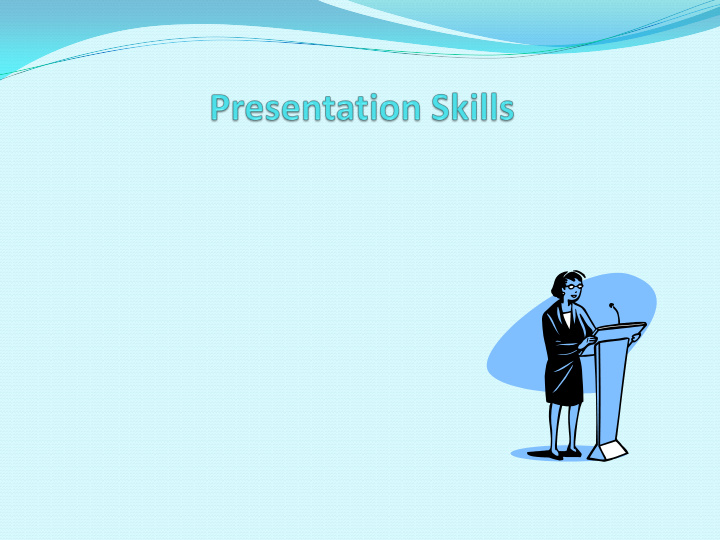



Image Owned by Tom Hailey
Goal To: learn and practice principles and techniques that you can take home and use in preparing and delivering your next presentation.
My Viewpoint… I believe… that by applying the principles and techniques we will learn…anyone can become a very effective and talented presenter, and actually have fun in the process.
3 Key Parts to the Process Writing Presentation Overcoming Stage Fright
Speech Writing Learn about…the audience Learn about…the program managers expectations Learn about…the speaking environment
Target the… Audience Program Environment
Speech Writing Brain storm Focus on the GOAL Reduce ideas to key words or phrases
Three Part Structure Introduction Discussion Conclusion
Introduction Get their attention Identify your topic and goal State your viewpoint
Attention Getters Provocative statement Related humor Arresting facts or statistics Rhetorical statement
Introduction Topic sentence Specific & clear States the goal Final sentence States your viewpoint I believe that…
Discussion or Body Present Facts…Proof…Reasons to Agree Start early Idea folder Make notes as thought occur Organize main points Limit points to a manageable number
Discussion or Body Personalize Stories / Anecdotes / Quotes / Illustrations Use vivid language Visuals Slides / overheads / PowerPoint video / flip charts / props articles / books / testimonials / people
Conclusion Cue the ending Summarize Leave a lasting impression
Presentation Practice Areas Eye contact Pauses Body movement Voice pitch / rate / volume
Presentation Practice Areas Thinking in Ideas, not words Use of notes Enthusiasm Timing
How to Practice Reduce material to key words Simulate the speaking environment Picture…Visualize…your audience Audio tape / video tape / mirror
Managed Stage Fright Prepared well Researched the audience Know what’s expected Researched the environment Organized well Introduction Discussion Conclusion
Managed Stage Fright Visualized audience, self, and environment Have a comfortable beginning
Practiced… Eye contact Pauses Body movement Voice Thinking in ideas Using notes Timing
Presentation Day Arrive early Make the room yours Check A/V equipment Set out your materials Mentally rehearse opening
Presentation Day Breathe and move Visualize success Be flexible Smile and take your time
Extra Credit Don’t hide behind technology Interact with the audience Be prepared for problems Limit the subject matter Don’t be a self -important know-it-all
To conclude… Public speaking skills are important Prepare well and practice Visualize success Get experience…and have fun!
Recommend
More recommend